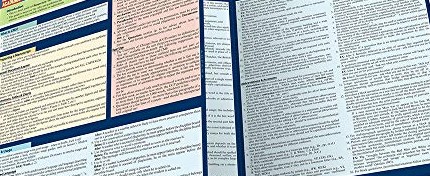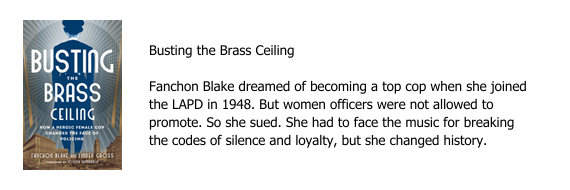Are you ready? Last week we covered copyediting basics. This week, we’re going to tackle what a lot of people would suggest handling last in a copyedit – formatting.
Start by turning on Track Changes even if you’re copyediting your own manuscript. You’ll want to be able to double-check the changes you’ve made once you’re done.
Okay. Here we go.
For your first step, you’ll want to look at the manuscript. Note that I did not say, “Read the manuscript.” That will come soon enough. For now, I want you to scroll through page by page and search for anything that does not work when it comes to formatting, since it will be harder to actually see those problems once you’re focused on the language.
Check the page setup. For books, the font should be black, 12-point Times New Roman. The page settings need to be for the U.S. standard 8.5×11-inch page size, with margins set to one inch at the top, bottom, and sides. The alignment should be set to left justified. Paragraphs need to be indented by half an inch, and that needs to happen not through spacing or tabbing, but in Word through the setting in the Indents and Spacing section under Paragraphs. Similarly, while you’ll find plenty of manuscripts where the authors have started new pages simply by hitting the Enter key until they reach the top of a new page, you’ll want to click on Insert, Pages, then Page Break instead. You’ll find more information here. You’ll want to check Turabian if formatting a research paper, dissertation, or thesis.
Next, look to see if there more than one space after a period. As I pointed out in my post called “Writer Mistakes: Formatting,” unlike typesetting in the old days, computer fonts “are programmed to space characters according to how much room they take up on the page. That’s why most stylebooks, including the AP Stylebook and the Chicago Manual of Style, now mandate a single space after a period.”
To correct those double spaces (or more) after a period, pull up your Search and Replace function. Put two spaces in the search bar and one space in the replace bar and, after making sure you’ve done that right, hit replace all. Repeat that a couple of times. A quick note here. While you will mostly be working in Track Changes, I would suggest that you turn that feature off before you make these spacing corrections. Otherwise, there will be so many changes noted that you will not be able to see anything else.
Next, check the quotation marks as well as the apostrophes. Are they done as smart quotes (the curly ones that curve toward the quoted text) and smart apostrophes or as straight quotes and apostrophes? You want smart option. You can do the same kind of Search and Replace that you did for the double spaces. Just put a ” in your search bar, making sure you don’t have any extra space as included, and another ” in your replace bar and hit Replace All. Do the same with the apostrophes.
After you’ve turned your Track Changes back on, check to see if the line spaces are correct. The manuscript should be double-spaced except for block quotes. If you’re writing an academic paper, Turabian specifies that block quotes should be indented by half an inch (just like paragraphs) and single-spaced with no quotation marks. However, any quote shorter than five lines needs to move up into the prior paragraph and be set off with quotation marks. If you have a second paragraph in your block quote, you’ll want to indent that one.
After the block quote, there should only be a double line space. Often you end up with spacing below the block quote that’s larger than the spacing just above the block quote. To fix this, simply make sure that your single-space formatting includes the line space below the block quote.
You still with me?
Moving on …
Are numbered or bulleted lists handled in a consistent way? If not, you’ll want to consistentize (my favorite made-up word) them now.
If there are headings or subheads, check to make sure they’re consistent when it comes to placement—either centered, flush left or aligned with the paragraph intention. Also check to make sure they’re consistently in either title or sentence case and whether the font is consistent in terms of size and being bolded or italicized. In all likelihood, you’ll need to consistentize again.
If you’re dealing with footnotes, take a look at those. Not at how they’re worded, but just at the spacing. Make sure that there’s no extra space before the citation number that follows the close quotation mark. Make sure that the footnotes themselves are spaced correctly. They should usually be single-spaced with a line space in between if there is more than one on a page.
If you run into anything you can’t seem to fix or you’re not sure of, don’t hesitate to turn to Google and type in your question. In this dissertation, there was a problem with the footnote numbering, which jumped from #26 to #28. It turns out that when text has been edited, especially when Track Changes is not on, and you delete something that has been footnoted, the numbers will only correct themselves when you accept all changes in your copy. Then suddenly, like magic, the numbering fixes itself and is fine. Who knew?
Finally, do not forget to check your title page, copyright page, and whatever else applies to your front of the book or back of the book matter. You can find examples of book title pages here. Kindlepreneur’s Dave Chesson has just come up with copyright page templates for all kinds of different books that help with the content. You’ll find examples of how to set up a copyright page here. For dissertations, Turabian has a sample copyright page. Since that seems to be the bible for all copyediting related to dissertations, theses, and research papers, I would suggest investing in this paperback manual if your writing or copyediting falls in the academic realm.
I’m sure there’s more to talk about when it comes to copyedit formatting issues, but this will certainly give you a solid start. Next week, we’ll get into the language aspect of copyediting.




















0 Comments